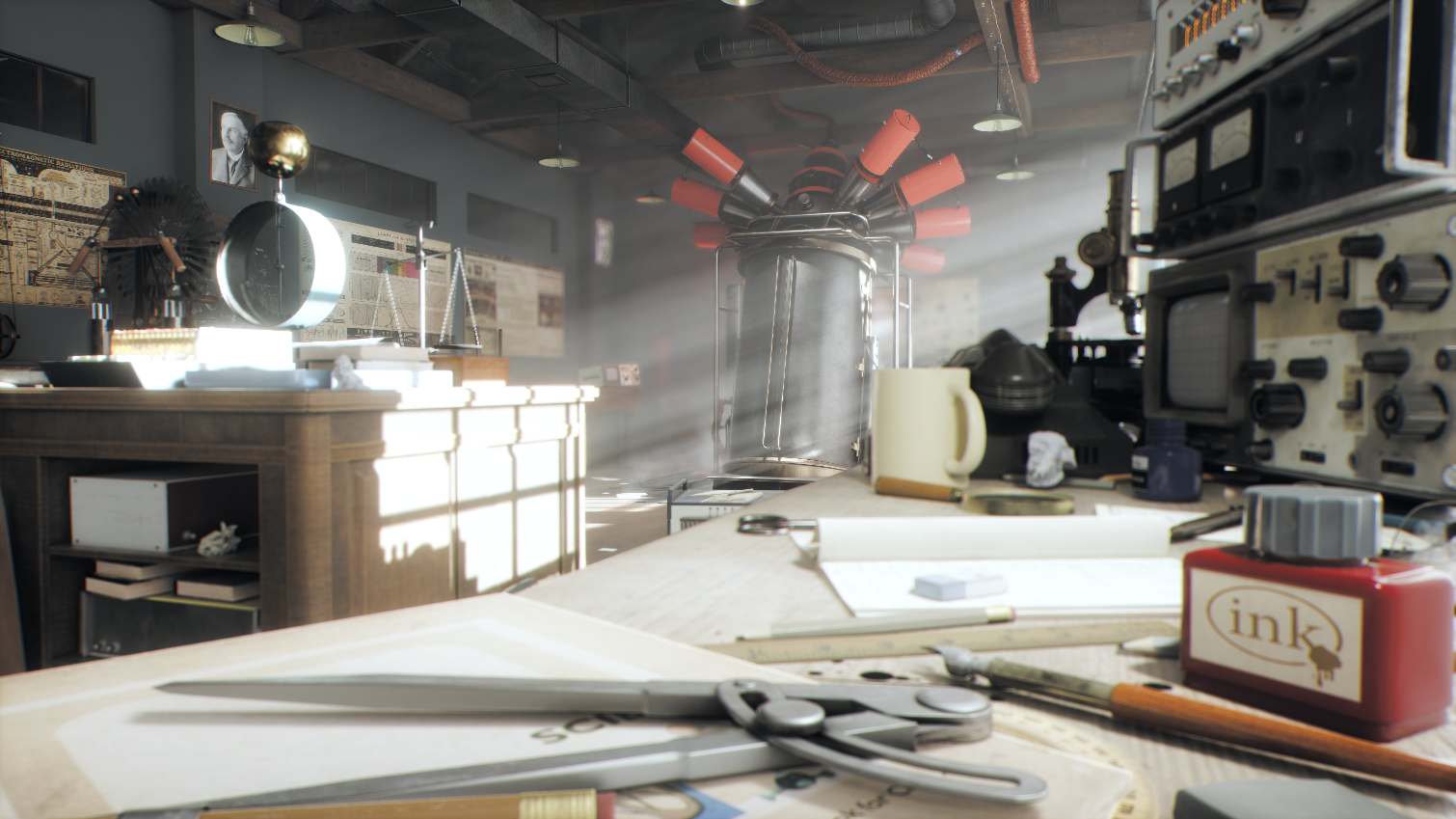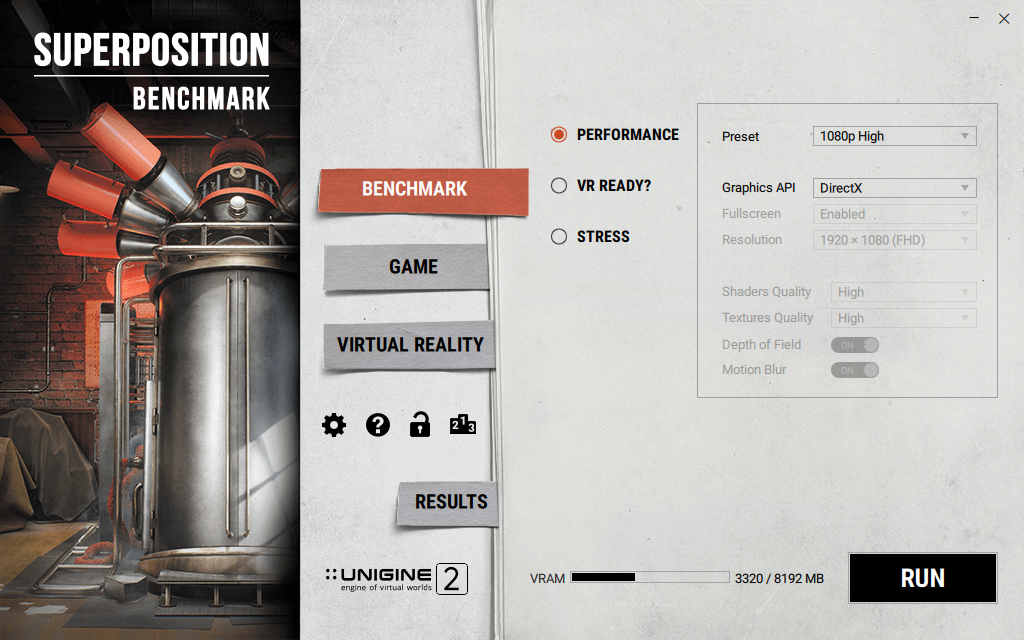Unigine Releases Superposition Graphics Benchmark With 8K, VR Tests
Unigine released a new graphics benchmark test based on the Unigine 2 graphics engine. The Superposition benchmark evaluates your GPU's physically based rendering performance on displays up to 8K, as well as VR headsets.
Unigine is well known for its graphics benchmark tools. Its Heaven (2009) benchmark leaned heavily on hardware tessellation technology and real-time global illumination, and the Valley benchmark from 2013 put dynamic sky, volumetric clouds, sun shafts, and ambient occlusion to the test. Now, Unigine’s Superposition benchmark puts your GPU through its paces with physically based rendering of surface materials.
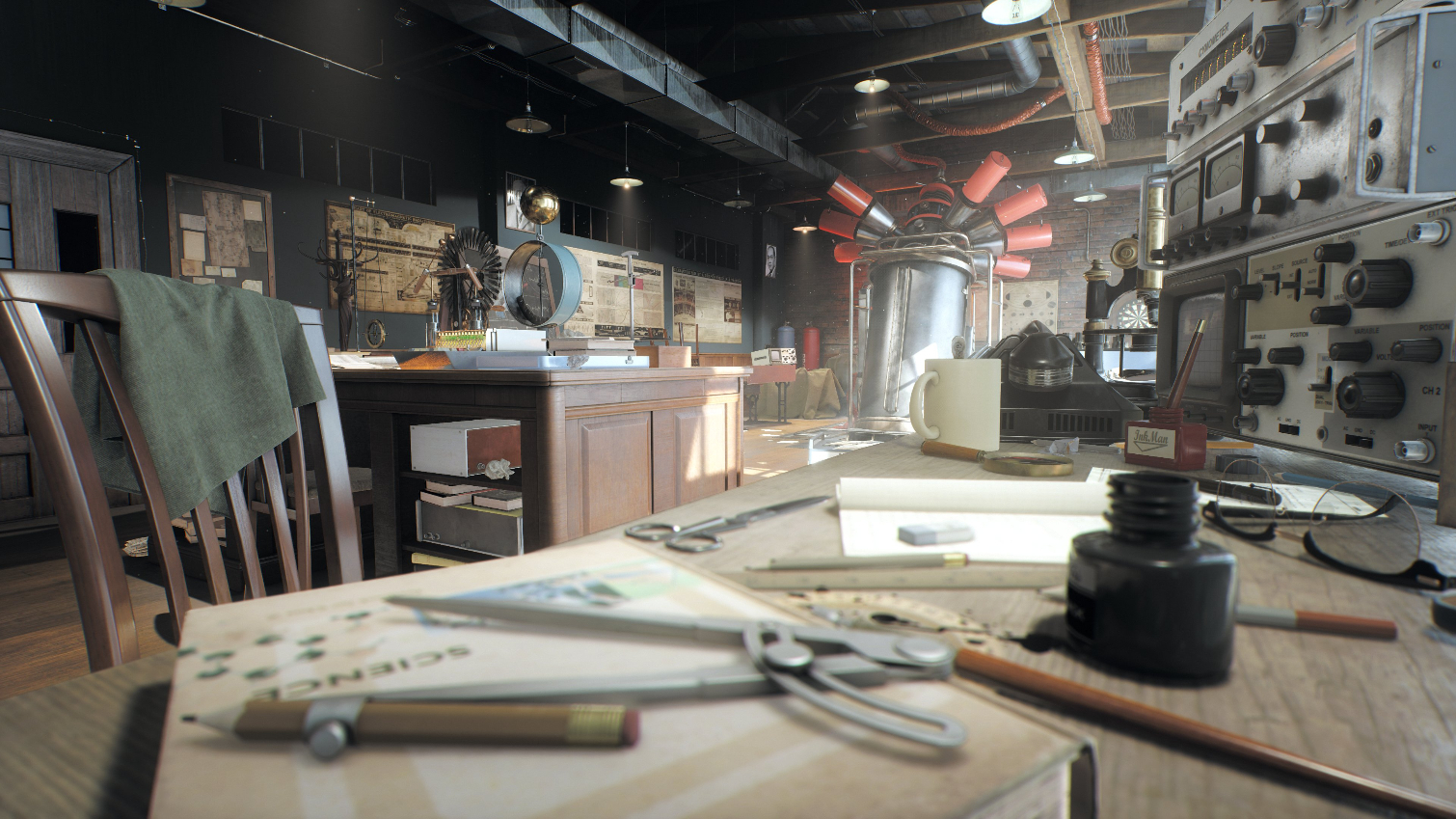
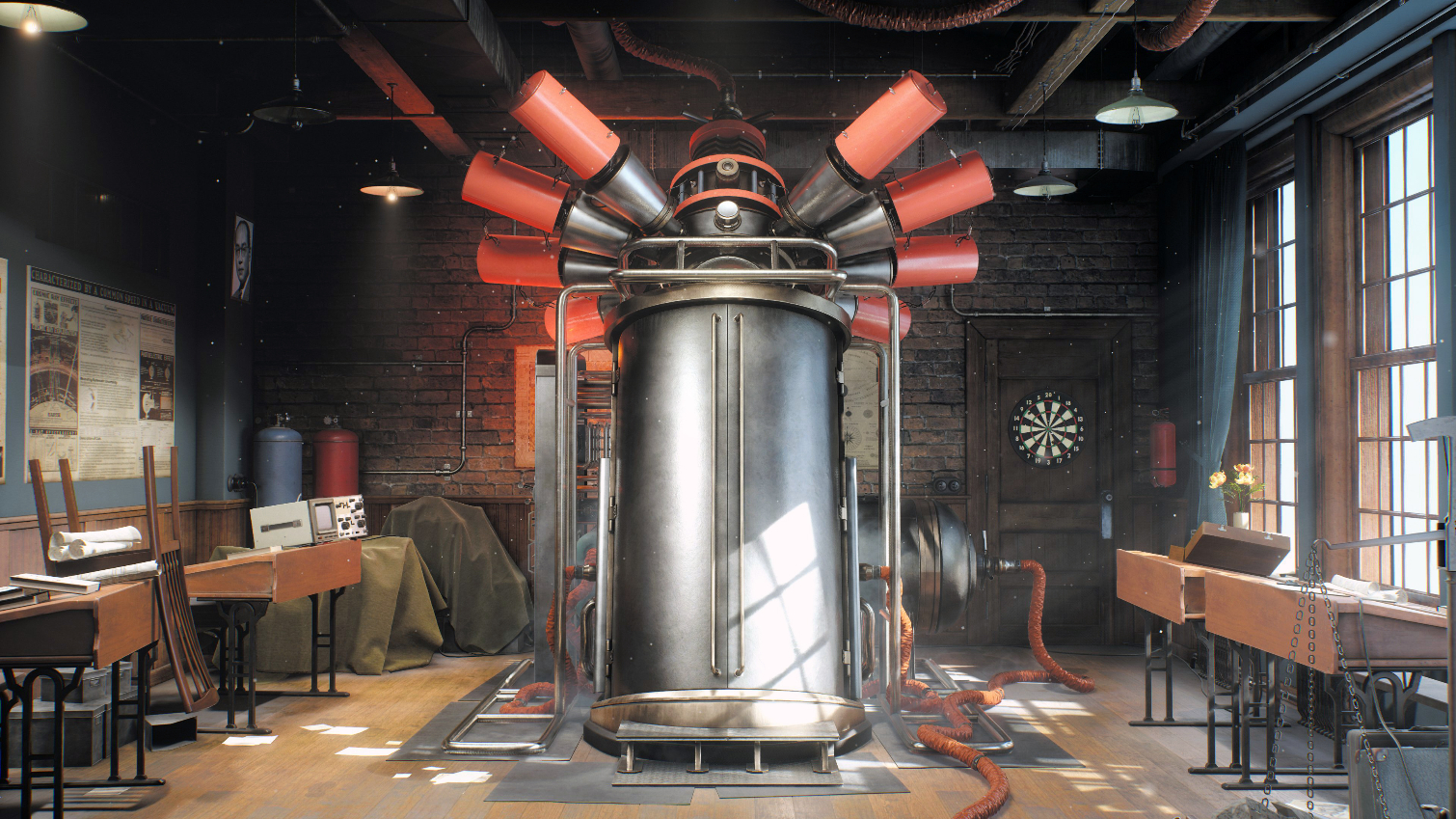
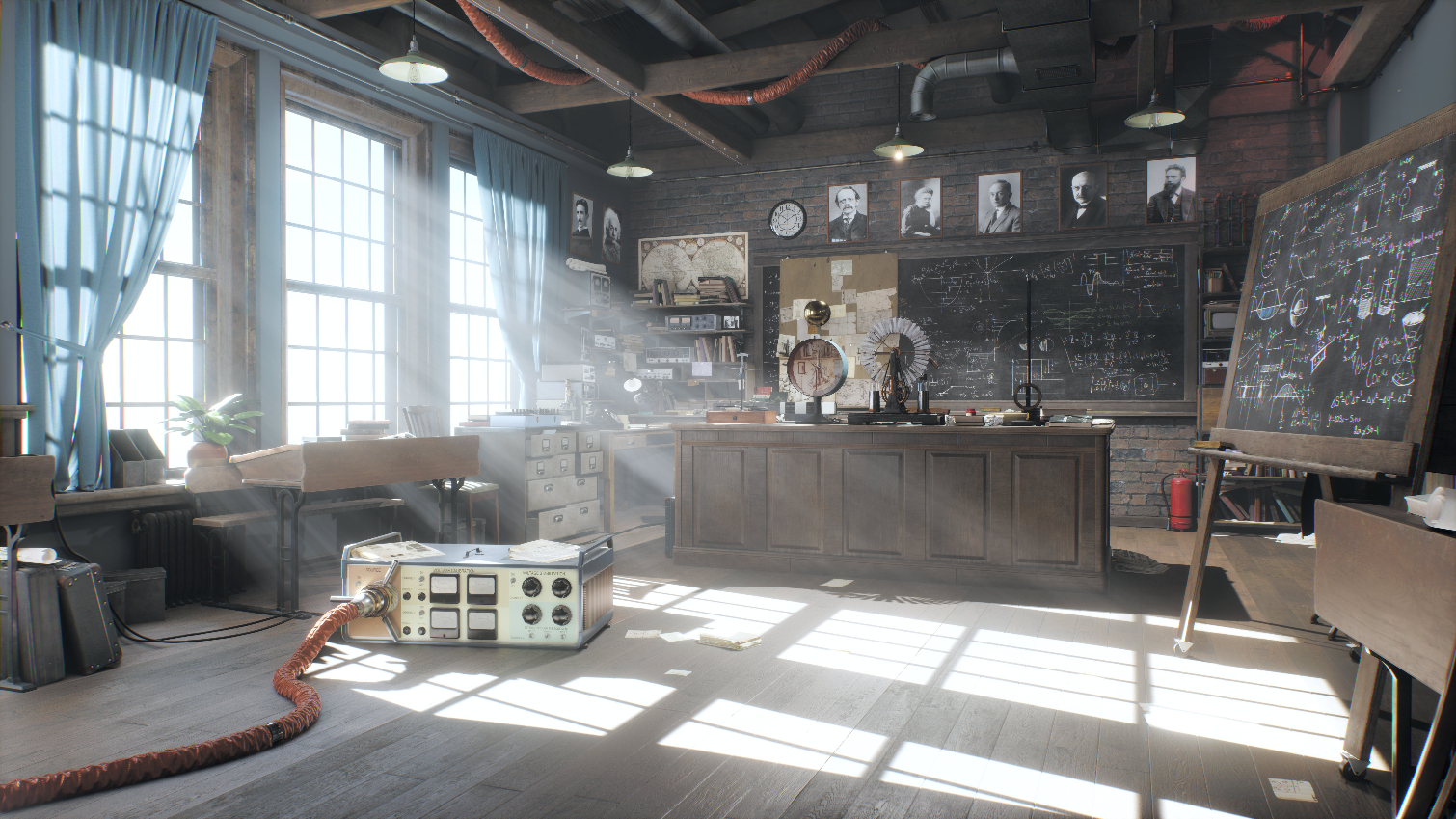
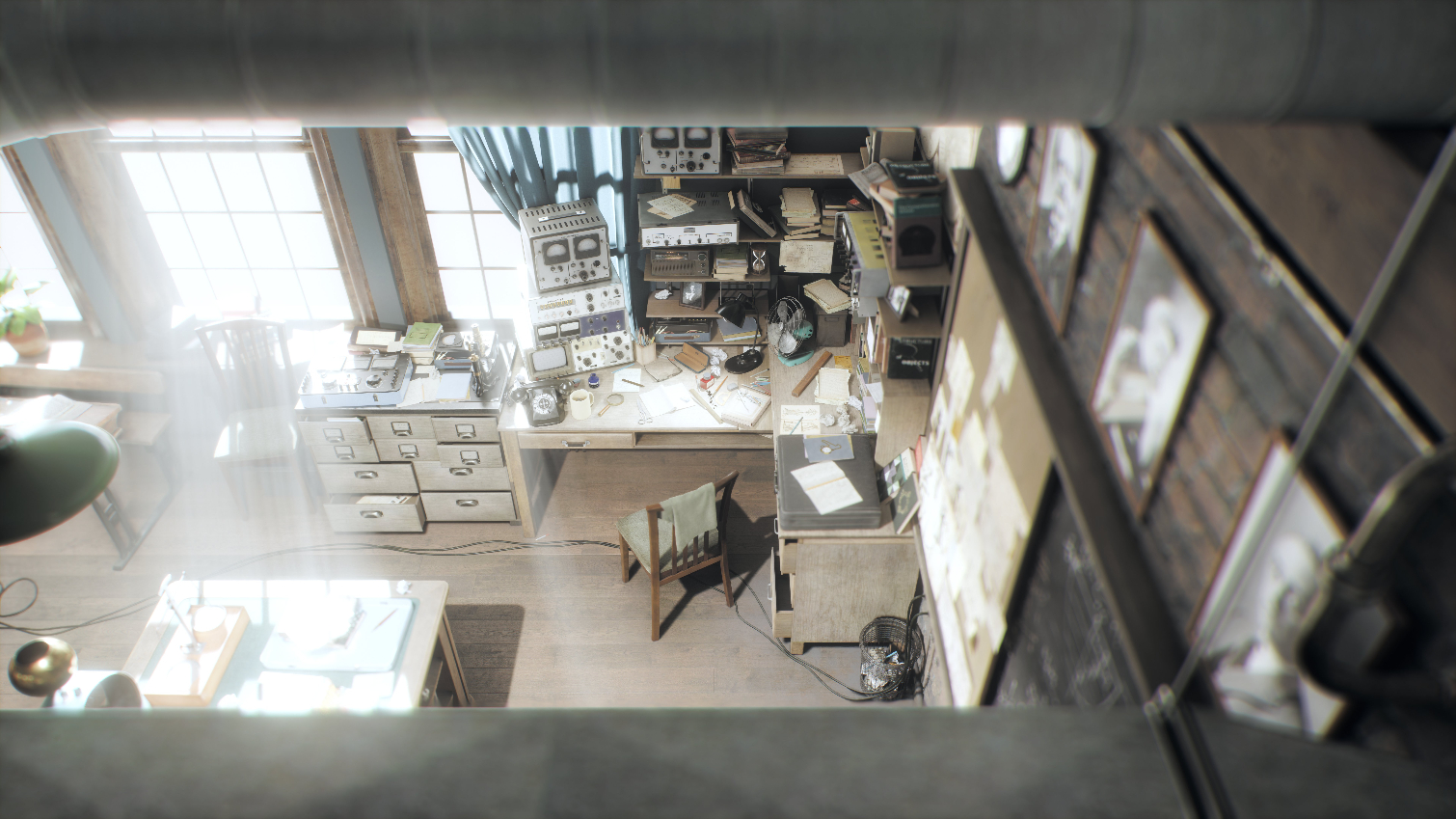
The Unigine Superposition benchmark includes performance tests for standard displays and VR HMDs.The performance benchmark page lets you select from several presets, including 720p low; 1080p medium, high, and extreme; 4K optimized; and 8K optimized. You can also define custom parameters, including resolution, texture quality, and shader quality. You can also toggle depth of field and motion blur and choose between the DirectX and OpenGL graphics APIs.
Performance Test
The Superposition test runs through 17 scenes and measures performance for each one. At the end of the test, it spits out a results page with minimum, average, and maximum FPS numbers; minimum and maximum GPU temperatures; and maximum GPU usages. You also get an overall score, which you can compare online against other people’s scores. The leaderboard page isn’t online yet, though.
Unigine also included a test that evaluates your PC’s VR performance. The "VR Ready?" test features configurations for HTC Vive and Oculus Rift headsets, as well as multiple graphics quality presets. When you select HTC Vive from the VR Headset drop-down menu, the software sets the resolution output to 1512 x 1680. When you select Oculus Rift from the list, the resolution preset is 1332 x 1586. The benchmark also has an option to configure a custom resolution to test for theoretical performance on future headsets.
| Preset | Shader Quality | Texture Quality |
|---|---|---|
| VR Minimum | VR Minumum | Low |
| VR Optimum | VR Optimum | Low |
| VR Maximum | VR Maximum | Medium |
| VR Future | VR Future | High |
The advanced version of the Superposition benchmark also includes a stress test option, which lets you run the benchmark in a loop for a specified amount of time. The stress test doesn’t include the preset configurations from the performance tests, but you can define the resolution, including ultrawide displays, texture quality, graphics API, as well as whether the test runs in fullscreen, windowed, or in a borderless window.
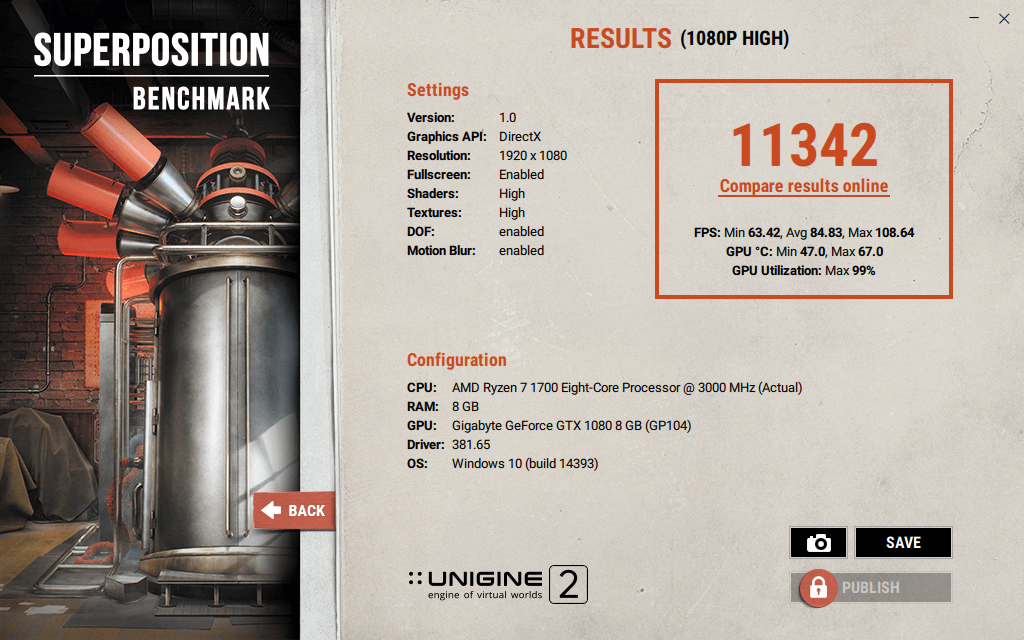
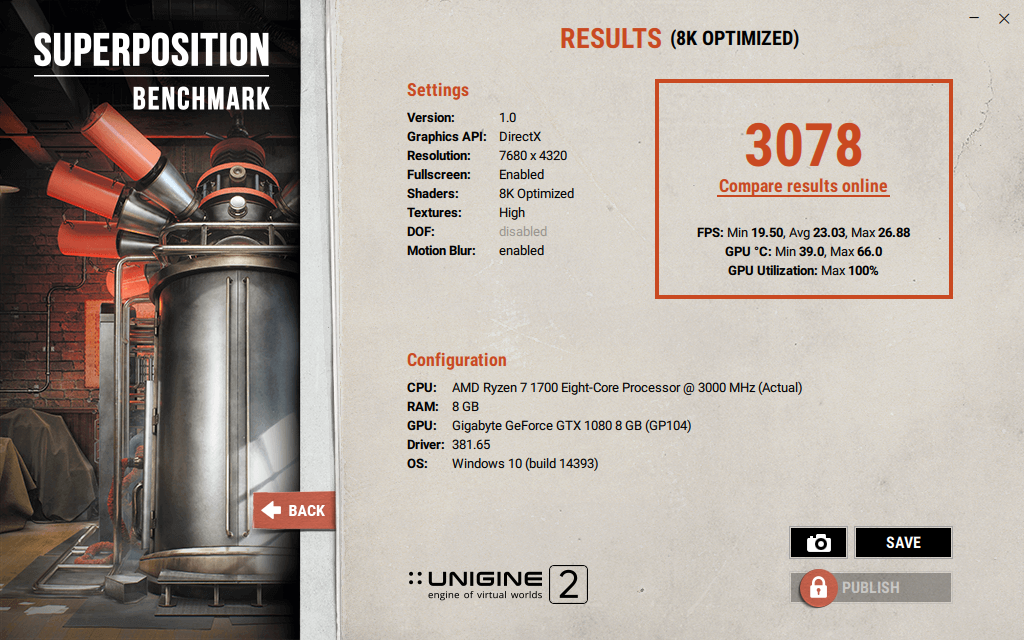
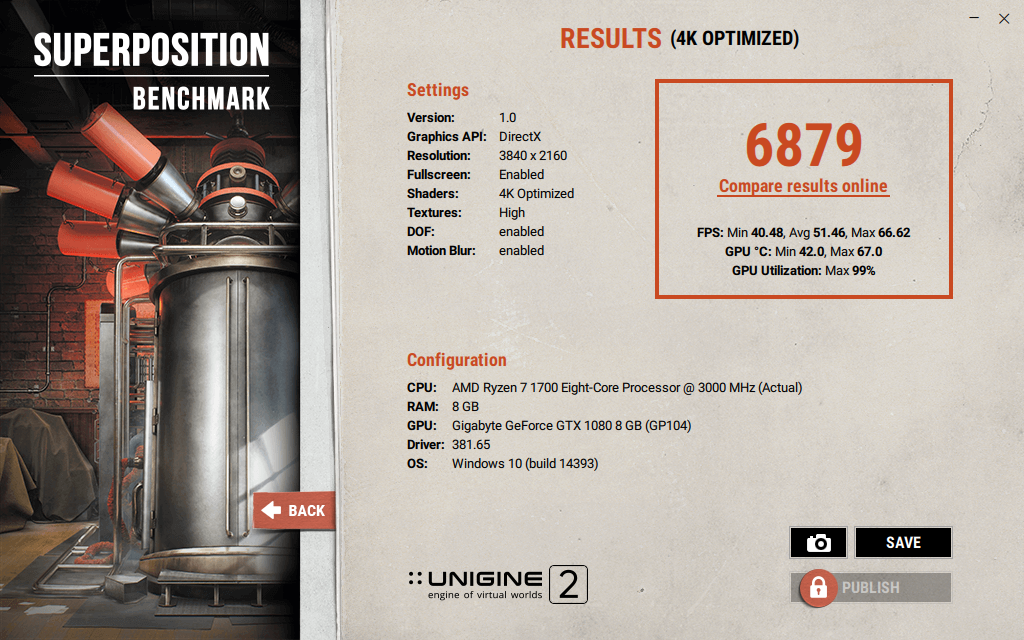
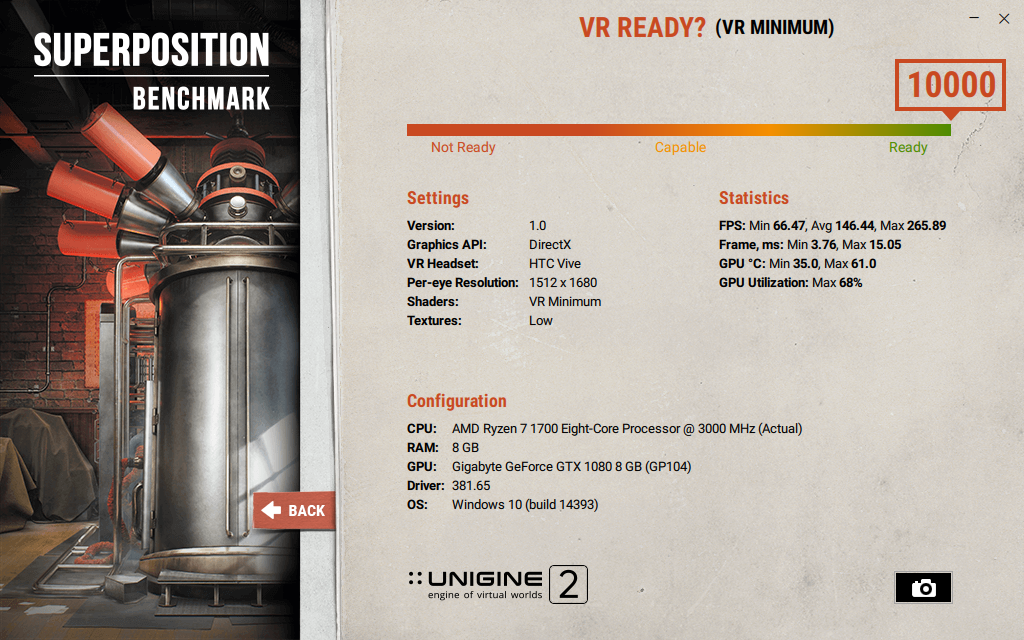
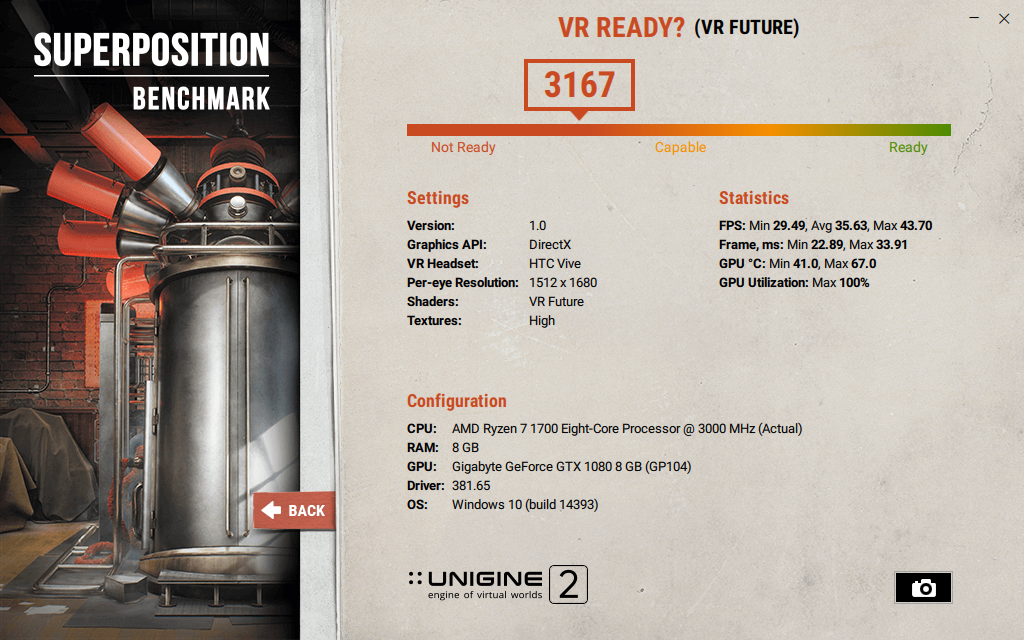
The Unigine Superposition benchmark also includes a game mode, which puts you into the lab environment from the performance test and lets you interact with many of the highly-detailed objects in the room. The advanced version of the benchmark also includes a VR version of the game that lets you visit the virtual environment first hand.
Get Tom's Hardware's best news and in-depth reviews, straight to your inbox.
Available Now
The Unigine Superposition Benchmark is available now and comes in three different editions: The Basic edition is free for personal use and it allows you to define custom settings, monitor your GPU, and play with the interactive demo. The Advanced edition give you access to the leaderboards, the VR experience, and the looped stress test. Unigine said the advanced version is for overclockers and VR users.
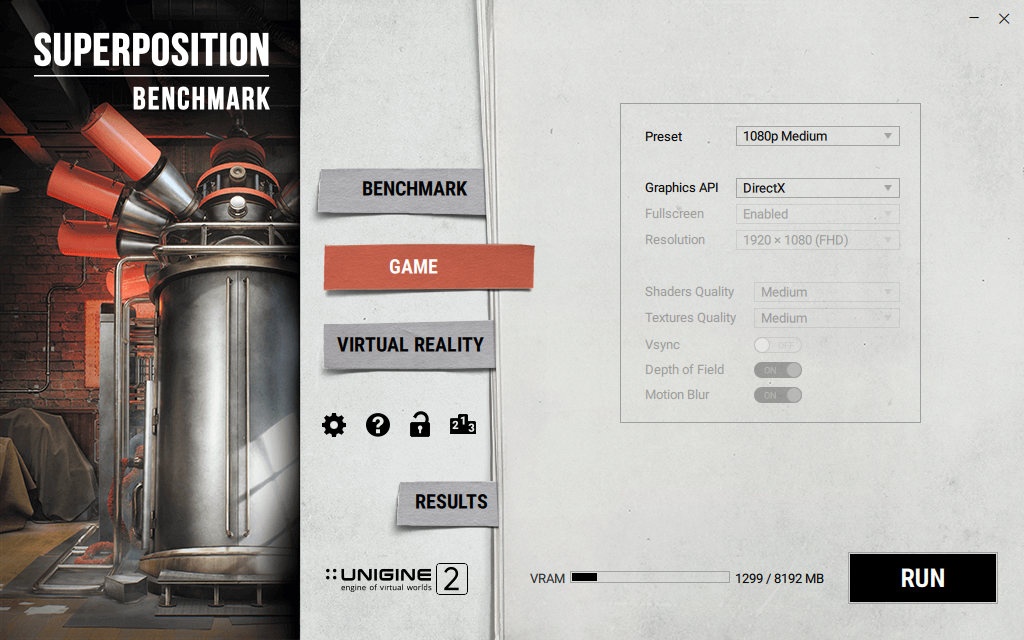
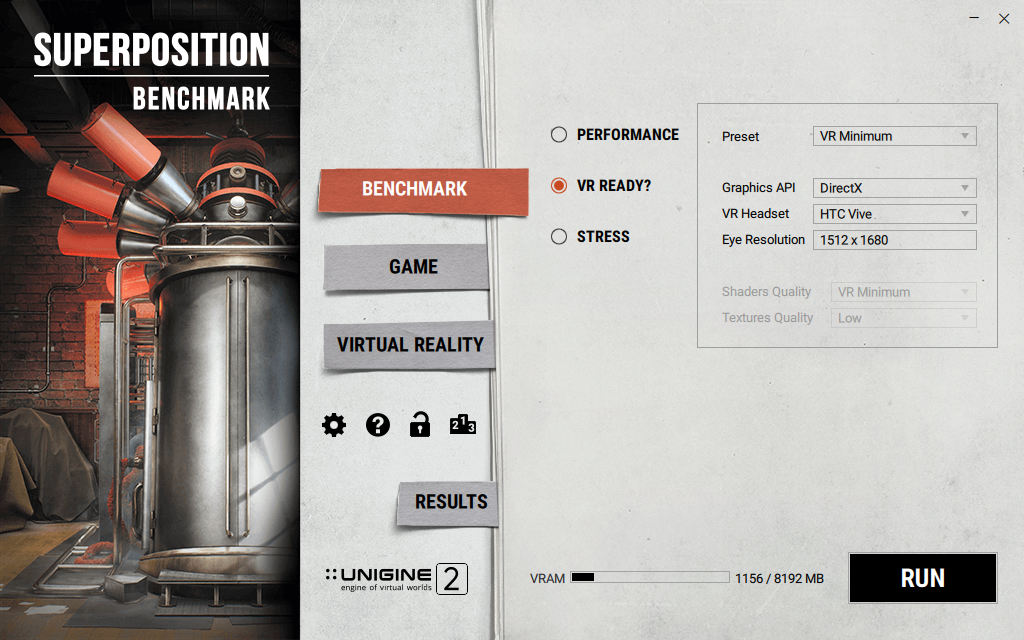
Unigine also offers a Professional Edition for commercial use. The pro edition includes everything the advanced version does and adds advanced features such as command line automation, exportable reports, per-frame deep analysis, and technical support.
You can download the free version of the Superposition benchmark from the Unigine website. If you want an advanced or pro version, you can upgrade from within the app or purchase it from the website.
Kevin Carbotte is a contributing writer for Tom's Hardware who primarily covers VR and AR hardware. He has been writing for us for more than four years.
-
junkeymonkey from unigine siteReply
Key Features
''•Stress load for the GPU heating system''
looks like one of them get it and see and hope your card don't get damaged ''stressing'' that heating system
you got anything on that ??? does it run your card up in temps till it fails or something ??? -
abbadon_34 Unigen was always a great benchmark, and never received enough credit. This looks like a giant leap, I wonder if it will find widespread use (here?)Reply -
larkspur Reply
When it's cold in my computer room I use Unigine to turn on my GPU heating system. Works great ;)19550439 said:''•Stress load for the GPU heating system'' -
derekullo It depends on the quality of the graphics card.Reply
Most all graphics cards from amd and nvidia have "thermal overload protection"
When they get too hot they reduce clockspeed which allows them to cool down but also can make frame rates drop. -
damric Fans of previous Unigine benchmarks will be disappointed. This benchmark looks and feels like it's beta, with no multi-GPU support and few changeable quality settings.Reply -
ssdpro I agree with damric. As a user of Valley and Heaven for years, this one is boring to watch. Both Valley and Heaven have very cool renderings and are each beautiful. While this benchmark does really stress my GPU, the scope of the benchmark is very, very small.Reply -
junkeymonkey so what do you get with that 1.2 ''GB'' download if your sayingReply
''Fans of previous Unigine benchmarks will be disappointed. This benchmark looks and feels like it's beta, with no multi-GPU support and few changeable quality settings. ''
'' this one is boring to watch. Both Valley and Heaven have very cool renderings and are each beautiful. While this benchmark does really stress my GPU, the scope of the benchmark is very, very small''
you would think at that size program it would of been something more on par with 3DMark firestrike
I do hope that data base Unigine sets up is like 3dmark and can pick out just what test run , gpu and cpu you want to compare to not just a bunch of wild random scores all over the place to weed out for your like system -
hannibal Maybe this is not ready? Only DX11, so a Little outdated today. But it may be possible that it get Vulcan and dx12 upgrade. Hopefully at least.Reply
